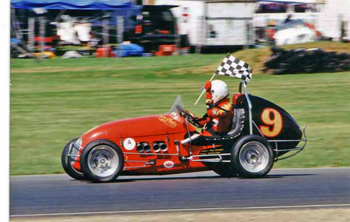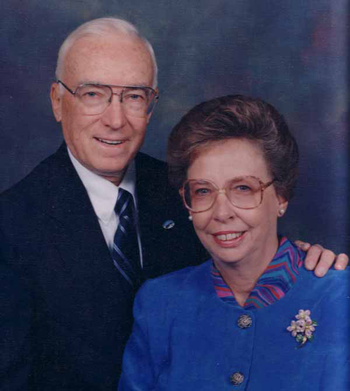|
|
 |
 |
 |
|
A visit with Gordon Eliot White
01-19-09
Written by Gordon White, edited by Richard Parks,
photographic consultant Roger Rohrdanz
|
|
|
|
|
|
|
|
 |
 |
|
I was born in Glen Ridge, New Jersey, on October 25, 1933. I was the first in my direct line to be born outside of Massachusetts in 313 years. My ancestors include William Brewster of the Mayflower Pilgrims, several clergymen, one of whom was accused of witchcraft at Salem and hung. My great grandfather Jesse Moore, who was born in Connecticut in 1812, (my grandmother was born when he was 60) went to Kentucky in 1833, took over a failed distillery in 1838 and became one of the largest distillers of bourbon whiskey in the United States in the 19th century. My great grandfather John S. White was a classical scholar who translated books from Greek and Latin and became the headmaster of a fancy boy's school in New York City and who once owned a block of Manhattan real estate at 52nd and Madison, but lost it all in 1903. One grandfather, Reverend Eliot White,
|
|
 |
was a controversial Episcopal priest in New York. He lost his parish after he picketed Bishop Manning at the Cathedral of St John the Divine in 1930. My grandfather Gordon was a farmer in Cassville, Georgia. He died in 1912 and my grandmother raised my mother and her three brothers by herself. My grandmother was the first woman to register to vote in Bartow County, Georgia, when women got the vote in 1920. My father, Maurice Brewster White, was graduated from Cornell University as a civil engineer. His first job was with the North Carolina Highway Department. In North Carolina in 1926 he helped build the entrance road to the Charlotte Board Speedway, giving him a lifelong interest in auto racing. In 1930 he went to work for the New York Telephone Company, rising to be the company's General Commercial Engineer. We lived on Long Island when I was young and Dad took me to watch the midgets run at the Freeport N.Y. Municipal Stadium in 1939 when I was six years old. The Freeport Stadium was one of the first midget tracks in the U.S. I became even more of a lifelong racing fan.
|
 |
 |
|
I attended schools in Freeport, which is about 30 miles east of New York City. I took metalworking shop classes in Freeport High School. My mother was a schoolteacher until she married Dad. I had several cars I hot-rodded in the 1940's, including a 1948 Ford which I added dual carburetors, milled heads, headers, eventually a stroked crank and other goodies I bought from Frankie Del Roy's speed shop in Paterson, New Jersey. A high school friend, Charlie Klem, and I drove across the country in 1951 and stopped at Bonneville while the Speed Week was under way. I was somewhat involved in racing in the East as a go-fer for noted midget and Indy driver Bill Schindler, who lived around the corner from us, and as a photographer, push-truck driver, and wanna-be driver. In 1952 I saw my first Indianapolis 500 mile race, won by Troy Ruttman. Two high school friends, the late Cornelius Freeman and James Yahner, shared my car interests and we went to the races together. My own chief interest was in becoming a newspaper reporter. In 1954 I
|
 |
covered Bonneville Speed Week as a stringer for the Associated Press and the Salt Lake City Tribune. I later worked as Washington Correspondent for the Salt Lake City Deseret News. In college at Cornell University I belonged to a local hot rod club and the local affiliate of the SCCA. I have a 1953 trophy for winning the club's rally in my Ford, much to the surprise of many members, who drove MGs. From Cornell I went to the Graduate School of Journalism at Columbia University in New York City. During the summer of 1953 I served as a seaman on the Socony-Mobil oil tanker Conastoga, on voyages between New York and Beaumont, Texas.
I was drafted in 1957 and served in the U.S. Army, stationed in Arkansas. When I returned from the Army I went to work in Washington as Washington Correspondent for the Chicago
|
|
|
 |
American, later working in Washington for papers in Albuquerque, New Mexico, Lincoln, Nebraska, Jacksonville, Florida, and Salt Lake City. I got FAA pilot's license in 1959 and hold a Coast Guard captain's license good for ships weighing up to 100 tons. I was chief engineer for a time on a 125 ft tall ship that sailed from Maine to New Orleans. My wife had twins in 1964 and for most of the 1960's and 1970's I saw few races and concentrated on raising the family and on my writing. I won a number of journalism awards in 1980-81 for my reporting on fallout from the 1950's atomic tests in Nevada and the cancers they
|
|
|
 |
caused. In 1978 I bought an antique Offenhauser-powered Kurtis midget that had belonged to Tassi Vatis, researched its history, restored it, showed it and ran it in vintage events. In the early 1980's I met the late Mark L. Dees through his marvelous book on Harry A. Miller, builder of racing cars and engines in the 1920's. Mark advised me that he was trying to set up a Vintage Oval Track class at Bonneville and needed additional participants. My car won the Antique Automobile Association's Grand National First Prize in 1986 and of course everyone asked, "How fast will it go?"
I knew Rex Mays had driven an Offy midget 147 mph at Bonneville in 1949. Mays had been the National AAA champion in 1941 and was killed in a race in California in the fall of 1949. He was, in a way, my childhood idol. More for the fun of it than in expectations of breaking Mays' record, I took the car to Bonneville in 1987 and went 134 mph. Having caught the bug I built a better roll cage (more aerodynamic) and got the right rear axle ratio and came back to the salt, running 156.902 with the Utah Salt Flats Racing Association in 1988 and, at Speed Week, under FIA timing, 153.223 in 1989. At the time I bought my old midget, my second wife, Joan, was not particularly interested in racing, but she accepted it. My third wife, Francis, accompanied me to Bonneville and seemed to enjoy it. Wives #2 and #3 having died, wife #4, Angela Tyler, the widow of a fighter pilot, enjoys the vintage racing scene much more. My first wife and I split in 1956 and she never went to a race with me, a failing having nothing to do with our separation.
In the 1980's I began to compile an archive of racing history resources that now totals more than 100,000 pages of racing publications, AAA, IMCA and other racing records and more than 5,000 blueprints of Miller, Kurtis, Novi, Offenhauser, Meyer & Drake, Reventlow, Watson and other designers and manufacturers. Copies of all of these materials are available, at cost, to researchers and historians. I retired from the newspaper game in Washington in 1991 and went to the Smithsonian Institution as the museum's Auto Racing Advisor. I collected several racing cars, of which I am most proud of bringing to the Smithsonian, the 1928 Miller Packard Cable Spl. #18. Since then I have written seven books on the history of auto racing
|
|
 |
 |
|
Thanksgiving 2006, at 73 years young, Gordon with his grandkids.
|
|












